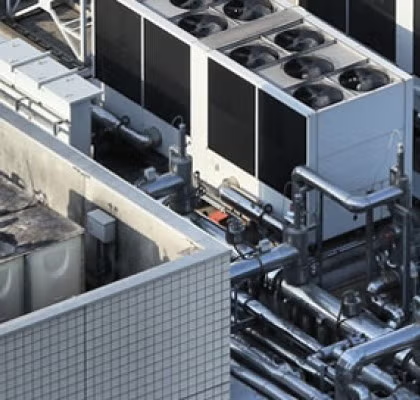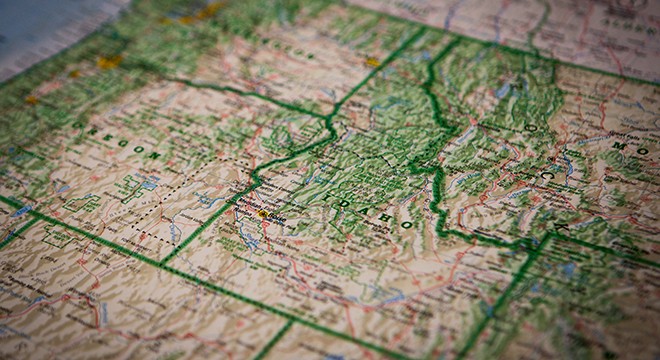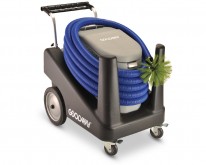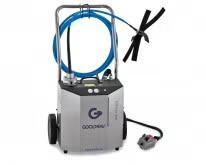Check Your Basic Skills on Duct and Ventilation System Cleaning
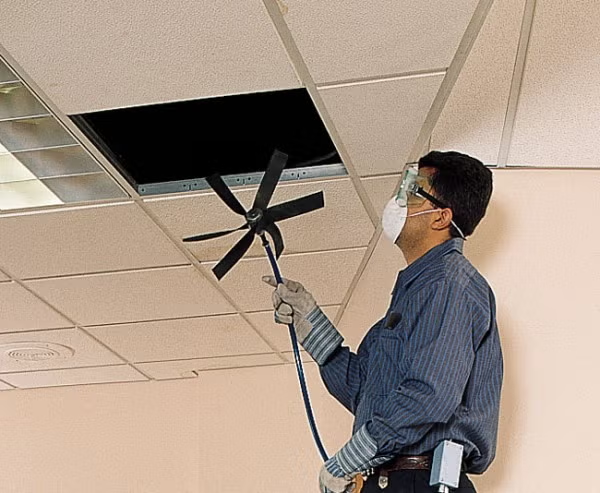
By Steve Spielmann
Stamford, Connecticut - Improperly maintained HVAC systems can become a breeding ground for "ductmites" (mold spores, bacteria, dust, pollen, and odor-causing particulate matter).
Simply changing the filters on an HVAC system is not enough to protect building occupants from the effects of contaminated indoor air.
By now, we are all aware of the terms, "indoor air quality" (IAQ), "sick building syndrome" (SBS) and "building related illness" (BRI). One-sixth out of 28% of all people who suffer from allergies, do so as a result of contaminated indoor air.
In fact, as many as half of all illnesses are either caused, or aggravated, by indoor air pollution. Indoor air can be 30 to 100 times more polluted than outdoor air.
Most IAQ problems are caused by inadequate ventilation, a source of pollution, or a combination of the two.
Solutions for inadequate ventilation are usually fairly simple to implement. A pollution source can be external to the building, or within the building itself (including the ventilation system ductwork).
When the source of pollution is external to the building, operating personnel are forced to deal with the effects of the pollution, by means of special filters, or other remedies. Internal sources of pollution call for solutions that attack the cause of pollution.
When the cause of indoor air pollution is dirty ducts, source removal is the most effective treatment.
The market for duct cleaners and duct cleaning services is huge and rapidly growing. It runs from private homes to a variety of industrial, commercial and institutional buildings. The need for duct cleaners, even includes cruise ships and naval vessels.
Tools and Techniques
Wherever the system to be cleaned is located, taking on a duct cleaning job carries with it some important responsibilities. Without the use of proper duct cleaning tools and techniques, complete source removal of contaminants will not be accomplished and serious problems can result. The following is a rundown of the most widely used duct cleaning equipment and the techniques employed today.
Vacuums: It is not necessary to own a giant-truck mounted vacuum to obtain professional-quality results. In fact, in larger buildings, it is necessary to use portable vacuum cleaner equipment in order to gain access to all locations. Truck-mounted vacuums are more suitable for residential work.
Two types of vacuums are needed for a thorough duct-cleaning job. First, is a large HEPA filter equipped, negative-air machine duct vacuum - generating at least 4,000 CFM (112 m3/min). This vacuum cleaner unit connects directly to the duct, maintaining the section being cleaned under negative pressure, preventing the release of contaminants into the occupied space and collecting all debris loosened in the duct cleaning process.
A portable HEPA vacuum is used for contact vacuuming of turning vanes, plenums, coils, drip pans, registers, and other surfaces.
Agitation Devices: Simply putting a section of duct under negative pressure is not sufficient enough to clean the duct. Agitation of the contaminants is required to loosen debris and send it into the airstream, created by the negative-air machine.
There are three generally accepted agitation methods in use today.
- Manual agitation by means of contact vacuuming requires physical access to all surfaces, which is gained by reaching through access openings, or entering the duct system. Spin Door Access Duct Fan Brush.
- A variety of air nozzles called "skipper nozzles", dislodge debris from duct surfaces. A portable air compressor is required to use skipper nozzles. There can be doubts as to whether all surfaces were cleaned, as skipper heads do not contact all of the internal duct.
- A rotary brush cleaner consists of a brush, or other cleaning head, spinning on the end of a motor-driven shaft. Most of these devices use a flexible shaft to ease operation and to accommodate bends in the ducts themselves.
Most duct-cleaning jobs require the use of a combination of these agitation devices.
Proper cleaning procedures ensure that the operator and surrounding areas are clean when the job is finished. The Rotary Duct-Cleaning System uses a cleaning brush, mounted to the tip of a flexible shaft. As the shaft rotates inside its casing, the operator feeds the rotating shaft assembly through the duct, loosening debris.
Coil Cleaners/Pressure Washers: It is helpful to have a small, portable pressure washer, or coil cleaning system on hand that generates 500 PSI (35 BAR), or less - for coil cleaning and drip pans in the system.
Access and Patching Tools: While existing openings should be used for access whenever possible, it still will be necessary to create an access opening. Access openings can be made using tin snips, hole cutters, or other tools. After cleaning has been completed, these openings are patched using reusable doors, or with sheet metal, screws, duct tape, and sealants.
Duct-Isolation Equipment: Inflatable air bladders are used to isolate sections of duct for cleaning, as well as to protect previously cleaned sections of duct from re-contamination. They are available in a range of sizes to fit most ducts. Portable electric inflators are available to make inflation of bladders quick and easy.
Fogging Equipment: Frequently, it is desirable to apply a sanitizing solution to the newly cleaned ductwork, to kill any residual bacteria, or other pollutants. This is accomplished using a portable, electric-powered fogging device. Many models are available.
Safety Equipment: Safety equipment includes, scaffolds and work platforms (working from ladders can be dangerous), lockout-tagout equipment, eye protection, breathing protection and cut-resistant gloves.
Planning the Job: Planning a duct-cleaning job requires the use of accurate mechanical drawings of the duct system. Drawings serve as a valuable planning tool and a map for the job itself. Drawings are used to identify coils, turning vanes, access points and to establish cleaning zones. Duct cleaning is generally performed in zones of about 25' (7.6m), or less. Some types of ducts cannot be cleaned using the cleaning methods described here. Uncleanable types of ducts should be identified at this stage. They will need to be removed and replaced (most flexible ducts and certain lined ductwork cannot be cleaned without damaging the ducting).
System Inspection: The duct system must be inspected before the duct cleaning is performed. The inspection is necessary to identify any access problems, or any damaged, or contaminated ductwork. General structural condition of the system can also be assessed at this time. Inspection should be performed when the area is unoccupied and the HVAC system is turned off. Drop cloths should be used to protect occupied areas.
Doing the Job: First, the operating systems must be turned off and locked out using approved lockout-tagout procedures. Lay drop cloths to protect the occupied areas.
The return side of the system is always cleaned first. The return side can typically be 5 to 10 times as dirty as the supply side.
Cleaning begins at the return air and outdoor air intakes. Sections of duct are cleaned moving toward the main air handler. Cleaning zones are isolated for cleaning by using inflatable bladders, inserted into the duct. When inflated, they conform to the interior contours of the duct, effectively sealing-off the section. Cleaned sections can be isolated in this way to prevent recontamination.
Access openings are made in the duct where none currently exist. A second opening is needed downstream to connect the HEPA filter-equipped negative-air machine. The distance between openings is typically 25' (7.6m), or less. With the negative-air unit running, the duct cleaning tool is inserted into the duct and fed in the direction of the airstream.
A fan-like brushing tool that actually blows debris toward the vacuum source is available with some rotary brush cleaners. Care must be exercised when using a rotary brush in lined duct, to not allow the brush to remain in one spot for too long.
Greater deposits are often found around fire dampers and turning vanes. Close attention should be paid to cleaning these areas. Once the return side has been completed, the same techniques are used to clean the supply side. Close access openings with reusable doors, or patches, made airtight using approved tapes, or sealants.
All duct insulation must be maintained and repaired, as well, to ensure proper thermal performance of the duct system. Grills and registers can be removed and pressure washed, or vacuumed with the portable HEPA vacuum.
Heating-Cooling coils and drip pans are prime breeding grounds for microbial contamination and if left uncleaned, will recontaminate the ducts. Use the portable pressure washer and portable HEPA vacuum to clean coils and drip pans. Drip pans should also be checked for proper drainage at this time.
A final inspection should be performed when the cleaning is completed and all access points have been resealed.
The HVAC system should be run until 8 complete air changes have occurred, before the area is reoccupied. Installation of higher-efficiency filters on the HVAC system will help to reduce future contamination. A HEPA filter-equipped negative-air machine generating at least 4,000 CFM (112 m3/min), collects debris while preventing the release of contaminants into the occupied space.
Additional Opportunities: In addition to cleaning HVAC systems, duct cleaning equipment can be put to work in other areas. One application, which is a recurring need, is clothes dryer vents.
Cleaning dryer vents help prevent fires in the vent systems. Another need for duct cleaning is in manufacturing facilities that use dust-collection systems and fume hoods. Some duct cleaners have even been used for cleaning grease hoods in commercial kitchens.
With over 30% of all office buildings, factories and public facilities suffering from IAQ problems, there is no end in sight for the need for duct cleaners and duct-cleaning services.
Reprinted with the permission of Air Conditioning, Heating & Refrigeration News Magazine.

